We all know that Maltipoo dogs are one of those dog breeds that are absolutely irresistible. Having been bred from the Maltese and the Poodle, what else can you expect?
After you have picked up your adorable new puppy from your purebred breeder, some new questions might arise from how it will adjust to its new living space, and much more!
One of these concerns is about how large your pup will grow! Will it grow to be like the Cavapoo or will it have its own personal growth curve?
As a responsible pet owner, you should know as much as you can about your new family member. You will now be concerned about their food intake, growth curves, and health issues.
Being a toy breed, Maltipoos, in particular, are super cute, having been bred to be relatively tiny, but they also have their own growth curve that you should keep track of.
If your Maltipoo doesn’t reach its ideal adult weight, it might be time to be a bit concerned.
In this article, we will present a Maltipoo growth chart and weight chart in order to make things easier for you!
Maltipoo Growth Chart – An Overview
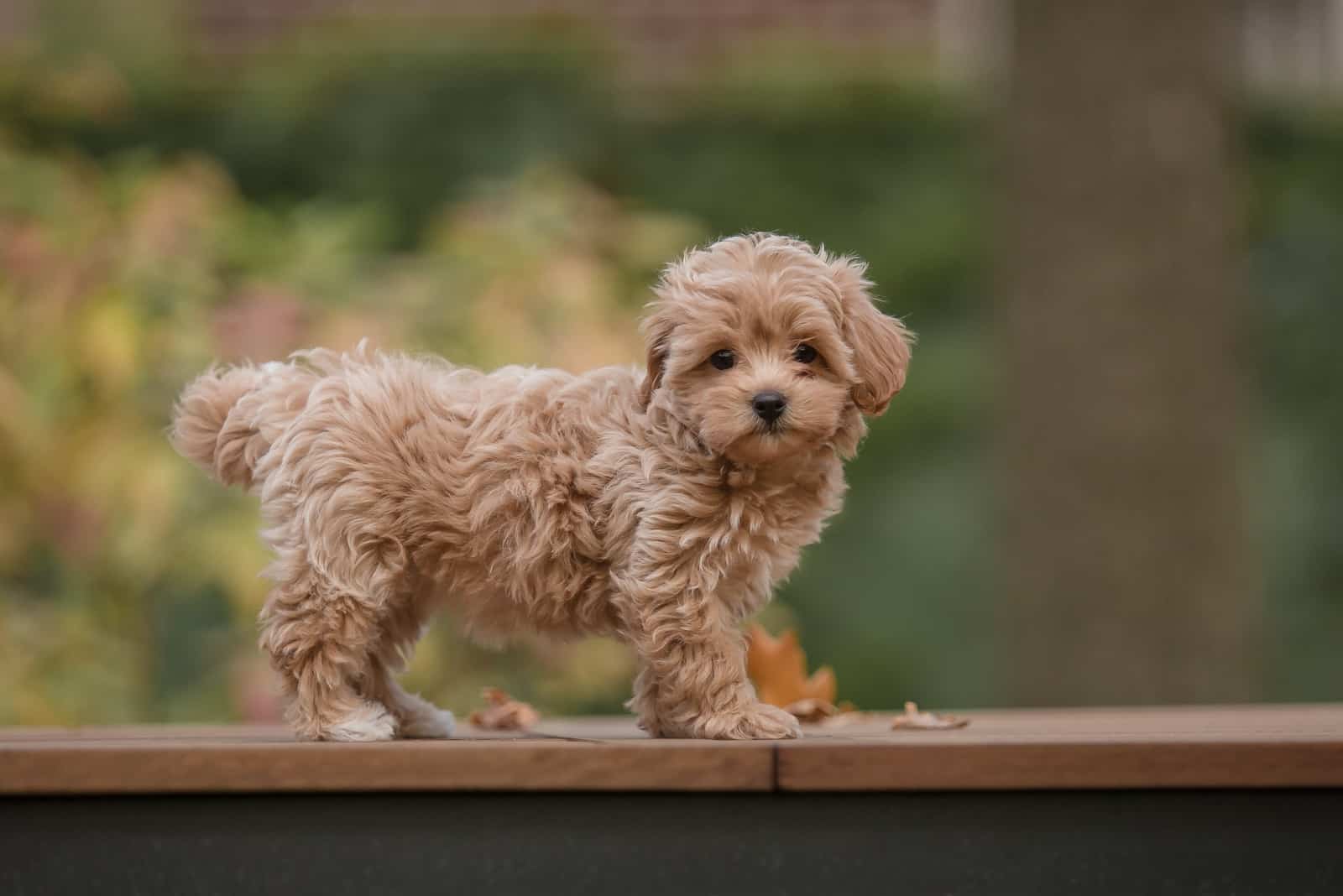
Before we dive into the details of growth and height, here is a Maltipoo growth chart that you can use to see whether your pup is growing properly.
| Age | Weight |
|---|---|
| 0 months | 0.1-0.5 lbs (0.04-0.2 kg) |
| 2 months | 1-3 lbs (0.4-1.3 kg) |
| 4 months | 2.5-5.5 lbs (1.1-2.5 kg) |
| 6 months | 3.5-7 lbs (1.5-3.1 kg) |
| 9 months | 4-9 lbs (1.8-4 kg) |
| 12 months | 5-12 lbs (2.2-5.4 kg) |
You might notice that there seems to be huge leaps in some growth periods (notice the large gap between 4 and 9 pounds, or 5 and 12 pounds in months nine and twelve in this weight calculator chart.
This occurs because there are different factors that affect how large your Maltipoo puppy will grow, which we will discuss more in detail below.
Maltipoo Growth Chart
You might be wondering how large your Maltipoo pup will get depending on the time marks it hits as it is growing. Don’t worry! We’ve created a detailed puppy weight chart and growth chart for you to look into.
Birth – 2 Weeks Of Age
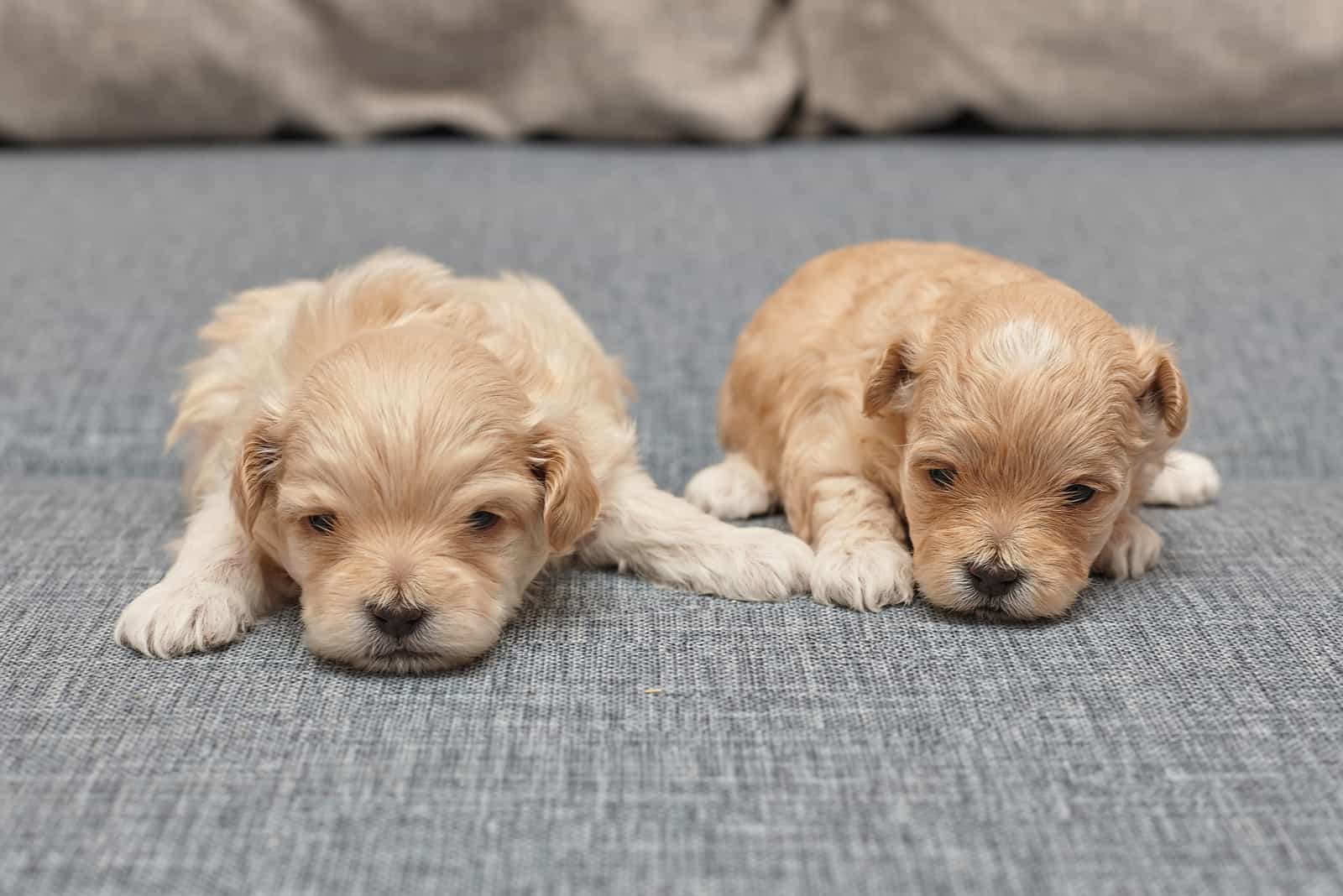
If you are lucky enough to be a Maltipoo breeder who examines the weight of newborn puppies, you will find that they don’t weigh more than a couple of ounces to half a pound.
This weight will naturally vary depending on the Maltipoo type that we have discussed above.
You won’t have to do much when it comes to Maltipoo care during this time, as the puppies will be entirely dependent on their momma’s milk at this point.
They will also depend on her body warmth, so they will not tend to explore their environment too much at this age.
3 Weeks – 12 Weeks Of Age
Between this age period, you will realize that the puppies will have a huge growth spurt, but they will still be entirely reliant on their mother’s milk up until the sixth to eighth week.
You will then need to start introducing the pups to puppy food.
You can also expect them to be rather hungry because they will be very busy exploring their environment and causing puppy mayhem!
4 Months – 6 Months Of Age
At this point, your Maltipoo puppy will be at approximately half of its weight as an adult.
Some even might stop growing by the time they are six months of age, depending on the breed of Maltipoo your puppy is. Teacup Maltipoos will most likely be the first ones to stop growing!
Regardless of the Maltipoo breed, your puppy’s growth rate should be decreasing at this point. It should also be having three meals every day of dog food as well as getting enough exercise through play.
7 Months – 9 Months Of Age
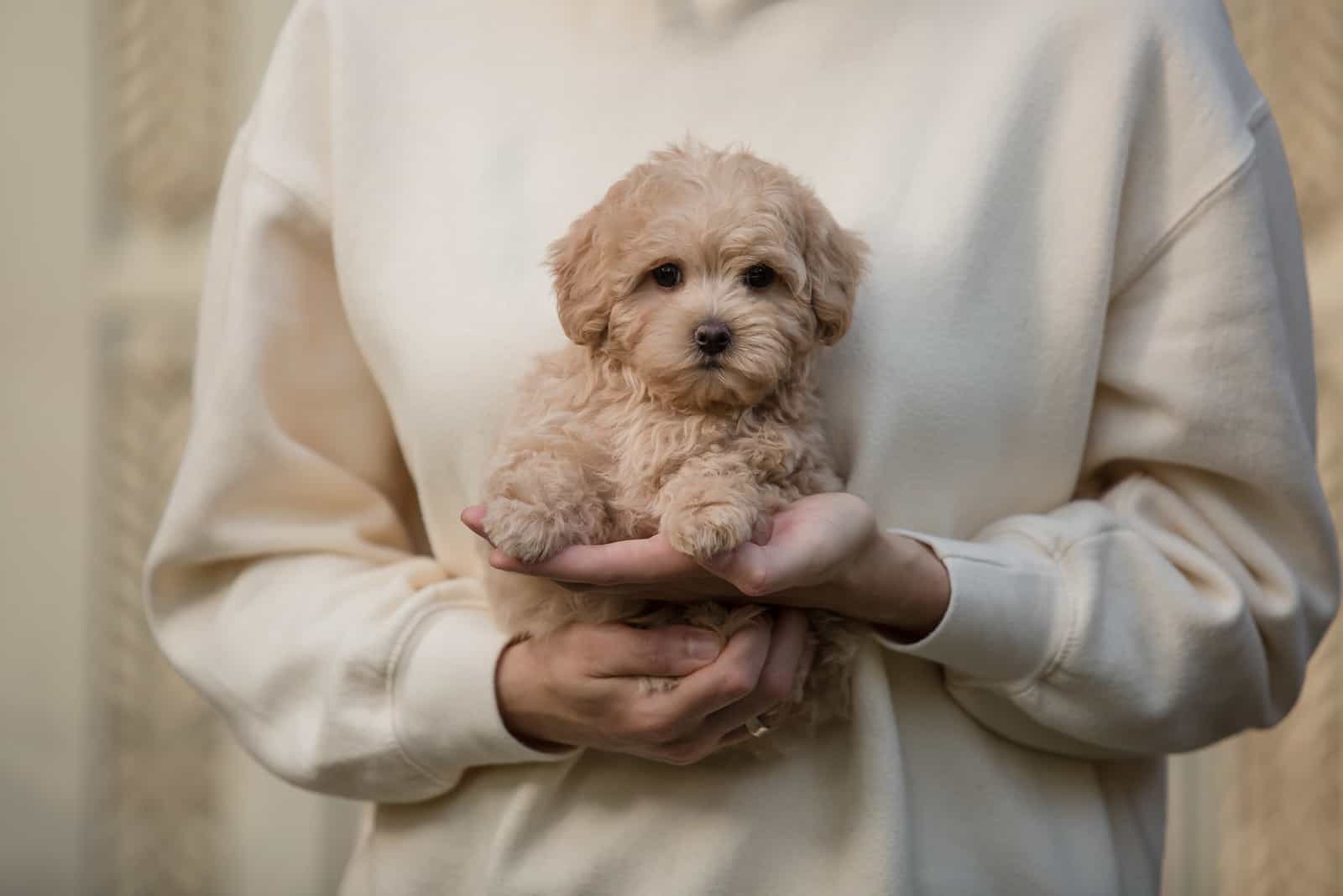
Certain Maltipoo types might reach their adulthood by this time mark.
Usually, toy Maltipoos or teacups will be more likely to hit their adult size when compared to larger Maltipoo breeds.
A miniature Maltipoo, however, will most likely take more time to reach its adult weight and height, so you don’t have to worry if your larger dog is still growing, even though its growth rate will slow down extensively.
You should also consider feeding your Maltipoo two times a day at this age period.
10 Months – 12 Month Of Age
This time mark is usually when all Maltipoo puppies begin to stop growing.
You might want to pay a particular amount of attention to how much weight your puppy gains during this time period, as you really don’t want to be feeding your pup more calories than it needs, especially if it isn’t growing anymore.
Here is a good measure of whether your Maltipoo is the right weight: if you can feel (not see) its ribs when you pet it, you’re good!
Adulthood
When your puppy reaches adulthood, you should change its diet by exclusively feeding it adult dog food.
Puppy food is great for… well, puppies – precisely because it has high fat and calorie content.
This is important for puppies that need this diet in order to grow into healthy adult Maltipoos, but it can considerably harm your adult Maltipoo’s health.
Being overweight is no joke, even for dogs, and it can lead to a considerable amount of health problems!
3 Factors Which Affect Maltipoo Puppy Growth

There are three main factors that will affect how large your Maltipoo puppy will be: genetics, nutrition, and physical activity/health.
We will discuss each of these factors in detail below.
1. Genetics
This is the most important factor when it comes to figuring out how large your Maltipoo pup will be.
Although the Maltipoo is a small breed, first-time Maltipoo owners might be shocked to find that the weight of their puppy will vary extensively based on the Poodle that the Maltese was bred with.
If your puppy is a crossbreed between the Maltese and the standard Poodle, its size will be larger than if it was crossbred with a toy poodle.
Like we have mentioned before, the puppy’s parents will ultimately determine how large your Maltipoo is going to be and when it will stop growing.
You should also keep in mind that certain puppies are not a 50/50 mix of Maltese and Poodle. The percentages depending on breed dominance will also factor into how large your puppy will become.
2. Nutrition
We all know that nutrition is certainly important when it comes to how big your puppy will become, but not in the exact way you might imagine.
Your pup’s growth certainly won’t accelerate or deteriorate based on what it eats, but its diet will definitely play a role in determining the quality of your pup’s growth.
For instance, if your dog is on a poor diet and becomes overweight, it will directly have an effect on its joints and other health problems in the future.
3. Physical Activity & Health
Maltipoos might not have the capacity of a large dog, but they definitely do need exercise and lots of play in order to prevent a variety of medical conditions that might result in a lack of exercise!
Along with play, your pup will derive multiple benefits from dog training that can involve doing tricks!
You just have to make sure it doesn’t spend too much time losing energy that it can’t recover from, especially if your pup is still growing. A good rule of thumb is for your puppy never to lose more calories than it takes in.
Your Maltipoo pup’s health will also affect how large your Maltipoo will become. Apart from exercise and diet, make sure you always go for checkups, and have your dog receive all vaccinations and deworming that it needs in order to stay healthy.
When Do Maltipoo Puppies Stop Growing?
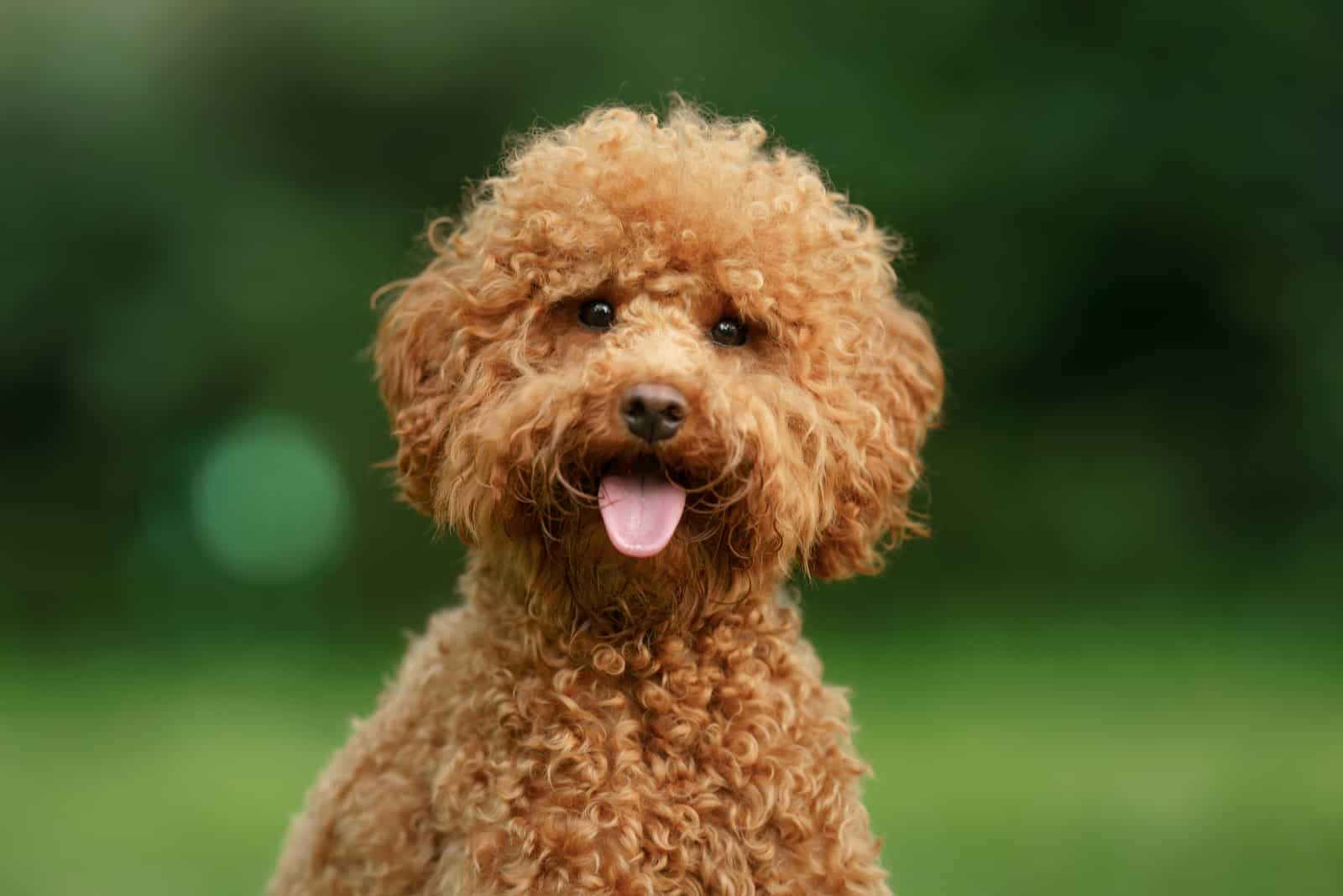
Maltipoos are small dogs. Even when they reach their adult weight and height, they are still tiny compared to other breeds. This is mostly due to their genetics – they were bred to be cute and cuddly!
The great thing about Maltipoo size is that you won’t have to worry about them taking up lots of space where you live. Throughout their lifetime, you will find them to be the size of walking teddy bears.
On average, it takes a year for a Maltipoo to become an adult. By the time they are twelve months or fifteen months old, a Maltipoo will have grown to be its full size unless other complications affect your dog’s growth.
What Are The Types Of Maltipoos?
Some Maltipoos grow more quickly than others, and one of the first things you might want to consider when it comes to Maltipoo growth is what kind of Poodle the Maltese was paired with to produce your Maltipoo.
A toy Poodle mixed with a Maltese (teacup Maltipoo) will produce a toy Maltipoo that will be much smaller than a larger dog will grow to be. These puppies will stop growing between six and nine months of age.
A miniature Poodle may also be mixed with a Maltese to breed your puppy, and in that case, your pup might be bigger than if it was bred with a toy Poodle.
A standard Poodle mixed with a Maltese will produce a puppy that will be somewhat larger, and it may end up finishing growing by the time it is a year old, but sometimes it will finish its development at the nine-month mark.
What Is The Best Predictor Of Maltipoo Growth?

The best predictor of your Maltipoo’s weight and height will be the size of its parents. If its parents were a larger breed, then it will take your puppy a longer time to reach adult size rather than if its parents were a smaller breed.
It is also important to mention that Maltipoo weight and height will vary depending on which of the parent’s genes is more dominant, which is usually the case with mixed breeds.
Your Maltipoo might have been bred by a miniature Poodle, but depending on if the Maltese or the Poodle’s genes were more dominant, the pup might be bigger or smaller than other Maltipoos bred with the miniature Poodle.
The only sure way of telling how large your Maltipoo will get is by determining it through a DNA test.
If your puppy isn’t exactly following the growth curve that we have laid out in this article, that doesn’t necessarily mean that you have to worry.
All puppies’ growth rates vary depending on what kind of dog they are.
If you aren’t sure whether your pup is following its natural growth curve, the best thing to do would be to schedule a visit with your vet and see what they say about your puppy’s growth.
Dog owners might also expect that their Maltipoo will exhibit adult dog behavior when it reaches the first-year mark, but it will usually be rather puppylike until it is two years old!
How Do I Measure My Maltipoo’s Height?
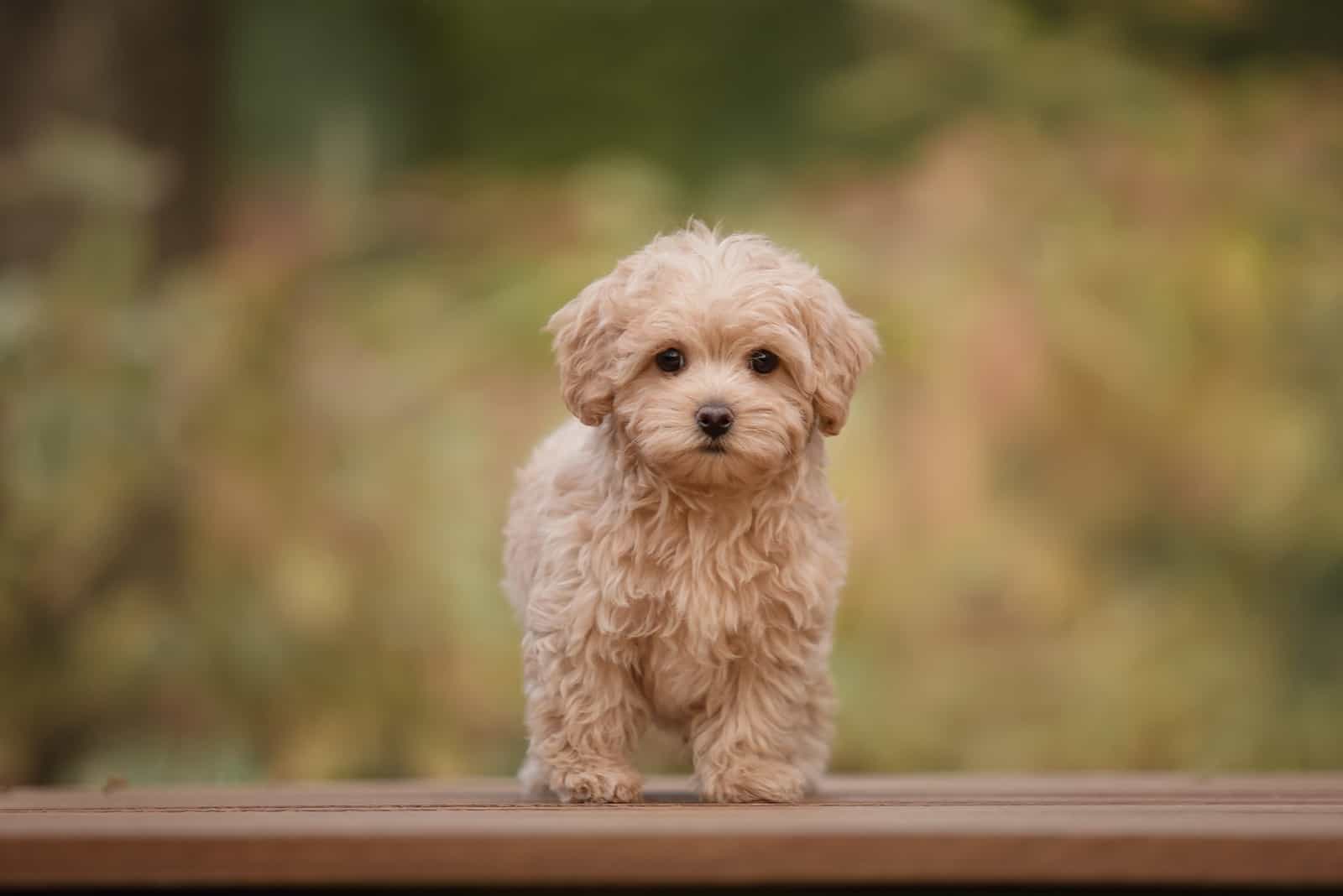
A full-grown, healthy Maltipoo will average anywhere between twelve and twenty pounds in terms of weight, whereas its height will be around eight to fourteen inches (20.32 – 35.56 cm).
In order to measure how big your Maltipoo is, you need a flat surface, preferably the floor, and a tape measure.
Help your Maltipoo stand straight, and make sure that its feet are evenly set apart. If it refuses to stand straight, you can have a friend or a family member help you keep it still while you measure it.
Measure from your pup’s withers to the ground. A Maltipoo’s withers will be located at the base of its neck, right between its shoulder blades. The difference between the two points will be your Maltipoo’s height.
How Do I Measure My Maltipoo’s Weight?
You will want to weigh your Maltipoo every six months or so, as this practice can help determine how healthy your Maltipoo is.
You don’t have to go to the store to get any special scale to measure your dog. A bathroom scale will work just fine.
However, make sure that the scale is set on a hard, leveled surface when you want to weigh your Maltipoo. Examples of good surfaces include tiles and wooden floors – but not carpets or sofas.
If your puppy keeps fidgeting when you set it on the scale and the reading keeps jumping around, you might want to do this little trick:
1. Record your own weight on the scale.
2. Hold your Maltipoo and record your weight together.
3. The difference will be your Maltipoo’s weight.
If you want to provide a fancier weight measuring experience for your dog, you may want to purchase a dog scale.
However, you have to ensure that your puppy gets used to the scale when it is young, so that it learns not to squirm around and you can get an accurate record of its weight.
How Do I Measure My Maltipoo’s Neck Size?
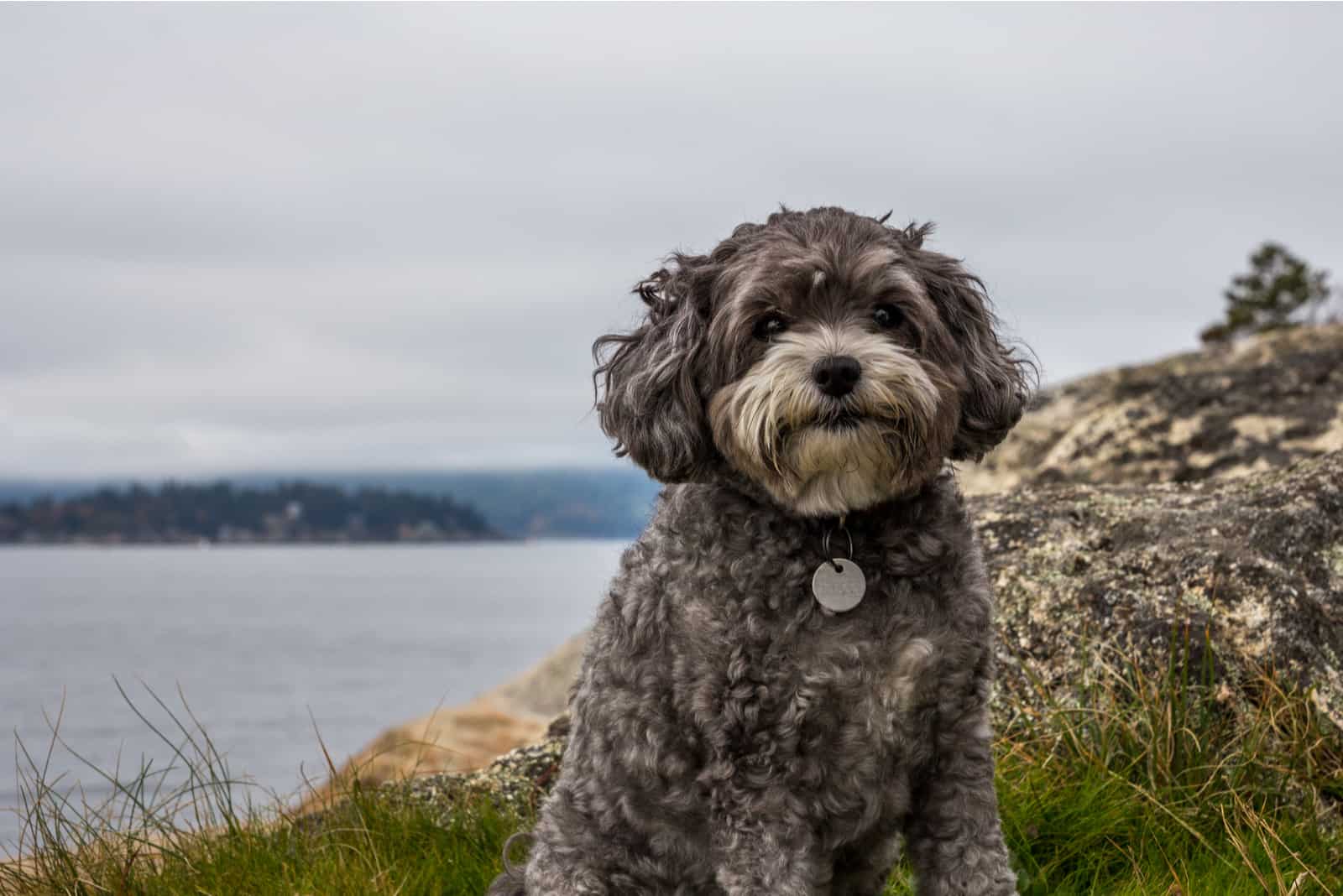
Measuring your Maltipoo’s neck size is important when it comes to figuring out what kind of collar you want to purchase for your pup.
A good collar will be secure, and yet comfortable for your dog.
Follow these steps:
1. Take a measuring tape.
2. Hold one end of the measure using one hand.
3. Circle the measure around your pup’s neck by using your other hand.
4. Put two fingers between the area you have measured (this is important in order to make sure you don’t purchase a tight collar).
5. The final measurement is your Maltipoo’s neck size.
Depending on its breed, your Maltipoo will have a neck size of approximately ten to sixteen inches.
Will My Maltipoo’s Growth Curve Be Affected By Neutering Or Spaying?
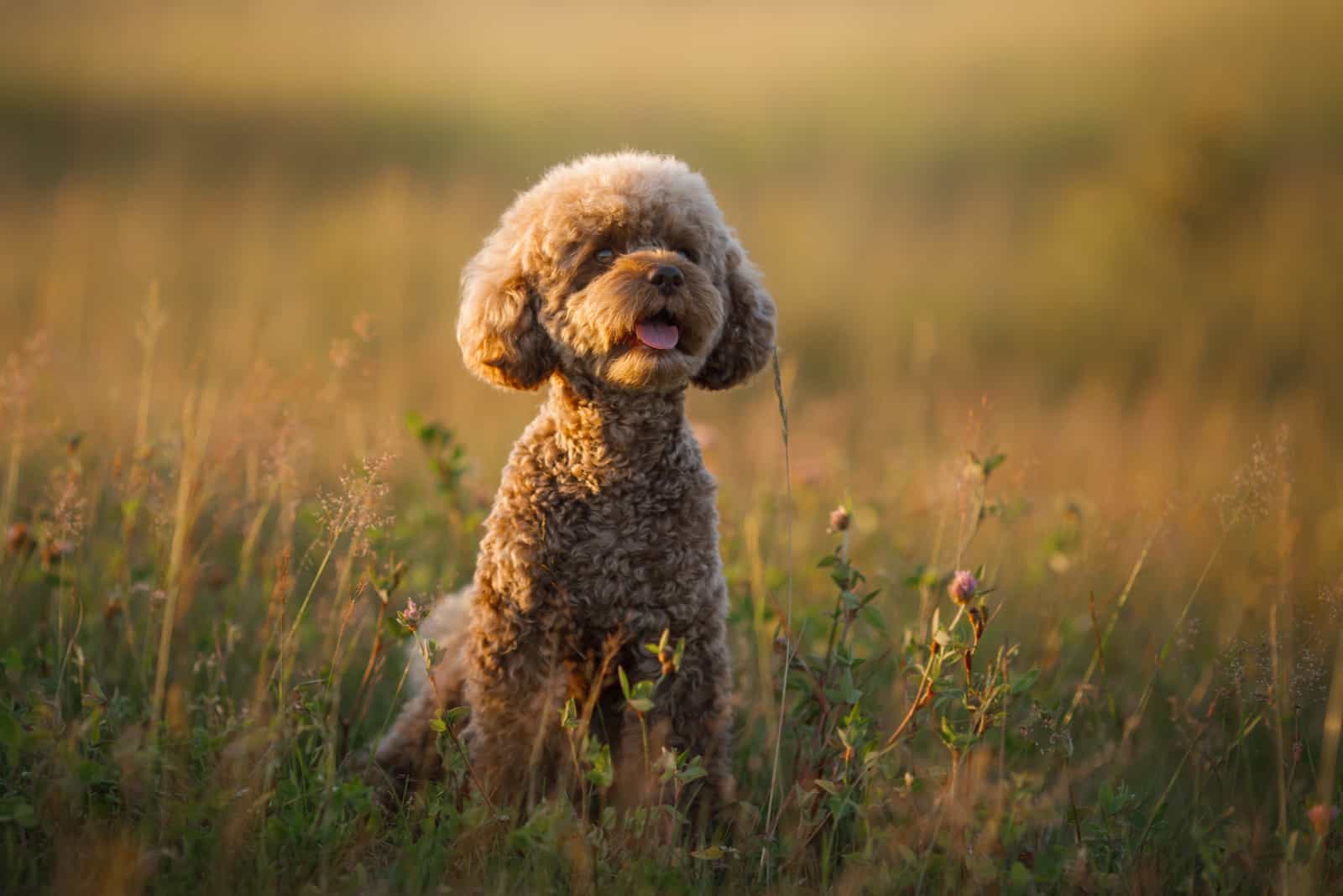
In short, yes.
Many dog owners deal with the question of whether they should neuter (male) or spay (female) their dog, which involves the removal of reproductive organs.
We all know that the reproductive organs of all mammals involve hormones that can affect a variety of different aspects of your puppy’s life – one of which involves growth.
If you are thinking about spaying your Maltipoo gal, you should consider committing to the procedure right before the first heat cycle. This usually occurs at the fifth- or sixth-month mark.
However, if you have a male Maltipoo and are considering neutering, you should go ahead with the surgery when he enters puberty, which occurs around the tender age of six months.
You don’t want your pup to undergo these surgical procedures too early, as your Maltipoo’s growth rate will be affected.
The growth plates of your Maltipoo have not yet closed before these time periods. This closure relies quite extensively on reproductive hormones.
The great thing about neutering or spaying your dog is that it creates certain behavior and health benefits.
Dogs that are spayed/neutered will derive benefits such as not getting pregnant, not being territorial about their environment, and will have a reduction of aggressive behavior.
Neutering/Spaying your dog also might help prevent certain mammary, ovarian, and testicular tumors or cancers.
What If My Maltipoo Is Not The Right Weight?
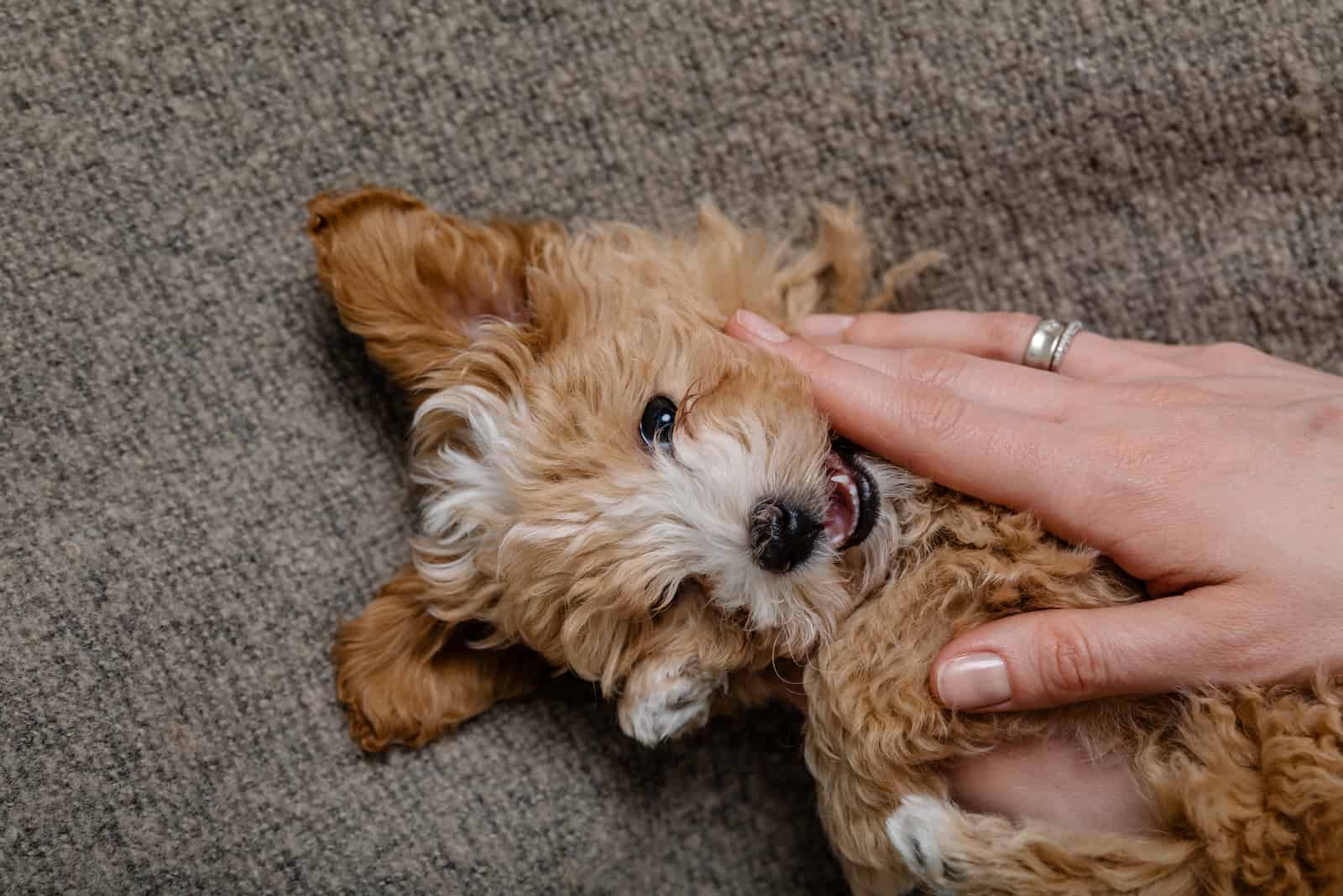
If you look at your Maltipoo growth chart and realize that your dog is not the weight listed by its age mark, you don’t necessarily have to panic.
The first thing you want to ensure is that your puppy has been on the same growth curve since birth all the way up until its age mark.
If your Maltipoo has been growing steadily at a rate that has been predictable, that is a good sign.
Remember, as Maltipoos are a dog mix between the Maltese and the Poodle, their size will ultimately be determined by their genetics.
As a result, some Maltipoos will be larger or smaller even if they were technically bred by the same types of dogs.
This happens because mixed breeds might usually have a larger percentage of one breed in comparison to another. This makes it rather taxing for dog owners to compare them with other averages out there.
However, if your dog is not following a predictable growth curve, you should definitely talk to your vet to see what might be going on, and whether you should be worrying about your dog’s health.
How To Choose A Maltipoo
Now that you’ve learned that Maltipoo breeders breed dogs in different sizes, you might be wondering which type works best for you.
First, you might want to think about the energy levels of the dog you would like to have as a family member.
If you want a Maltipoo primarily because it is a toy breed that is cute and cuddly, you might want to get a smaller breed, such as a teacup or a toy Maltipoo. These pups usually have a longer lifespan.
If you want a higher-energy pup, you might want to consider getting a pup that has been bred with a standard Poodle.
What Are Common Maltipoo Health Problems?
Every single breed has its own challenges in the genetics department, and Maltipoos are no different!
The health problems that a Maltipoo might have can be passed on from either its Maltese or its Poodle ancestor.
They also might be caused by environmental factors, such as malnutrition.
The most common health issue that a Maltipoo might have is White Shaker Syndrome, and this might occur during the first couple of years during your pup’s life.
Pooches with White Shaker Syndrome are not able to coordinate themselves within their environment very well.
Your pup might also have epilepsy, but this health issue can be regulated with proper treatment.
The condition that might be the most alarming in the Maltipoo breed is called Portosystemic Shunt (or PSS).
This health issue causes abnormal blood flow between the body and the liver, which can lead to poor growth, appetite problems, and poor coordination.
Any of these health issues might affect your pup’s growth, especially if it is not getting the nutrition and medication it needs to overcome these challenges.
You will have to talk to your vet if your puppy might be at risk of any of these genetic conditions.
Conclusion: Maltipoo Growth Chart
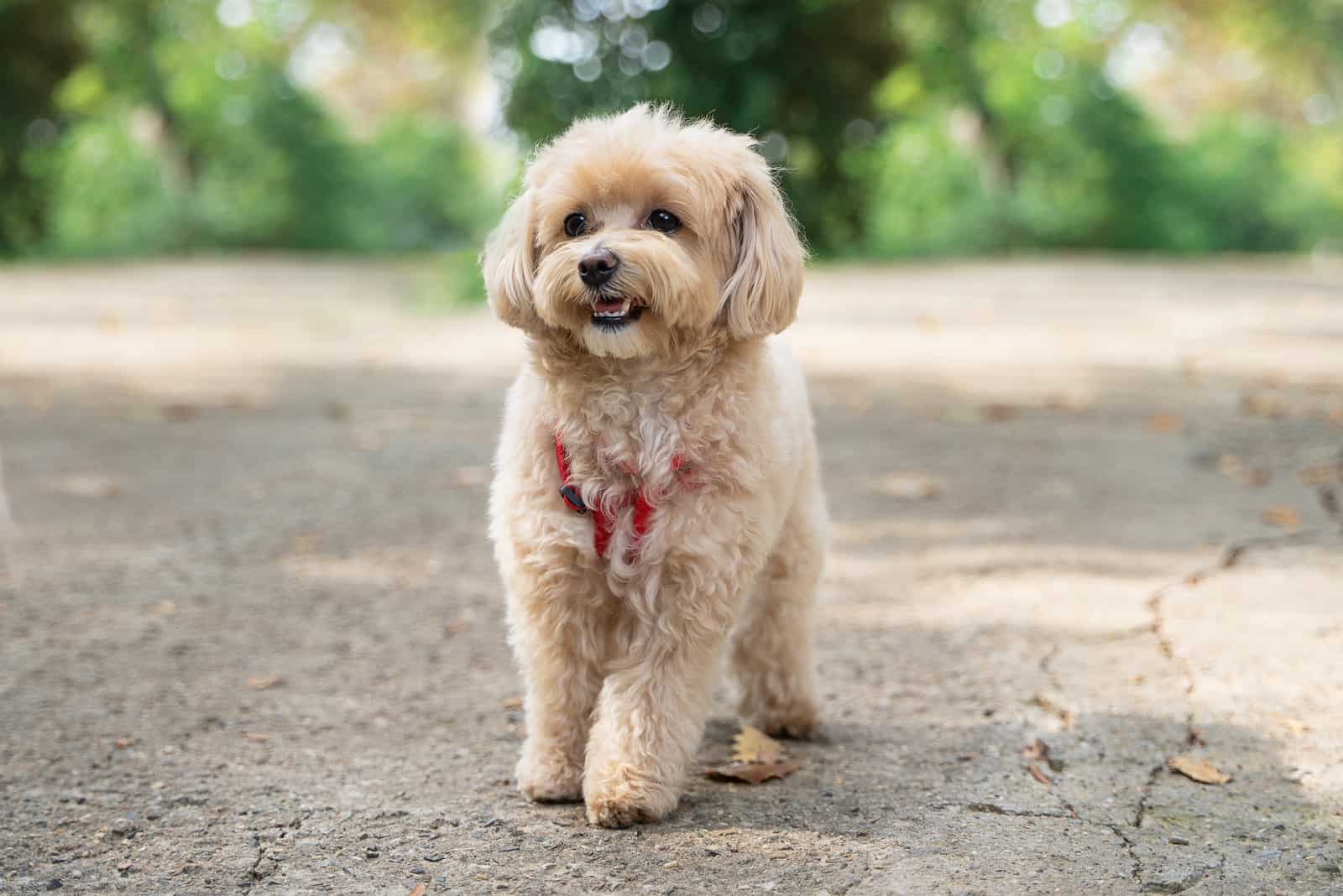
We know it can be quite difficult to figure out whether your Maltipoo is growing in a healthy manner, which is why we took the time to address all of the concerns you might be having during your Maltipoo’s journey.
We hope that we have answered all of your Maltipoo growth questions, and that the Maltipoo growth chart that we have provided is of use to you!
Remember, all Maltipoos are different, so if your pup isn’t quite following the Maltipoo growth chart we have laid out for you, it doesn’t have to be a cause for concern.
Like we said, Maltipoos are a mixed breed, and with mixes, it is sometimes difficult to tell how large your dog should be.
If your dog is smaller or larger than the chart indicates, it could just be that certain genetic factors are affecting your dog’s growth – and that’s perfectly normal!
Just make sure that your puppy is following its natural growth curve, and talk to a vet if you have any further questions!
Read Next: 7 Best Maltipoo Breeders In Toronto, Canada













